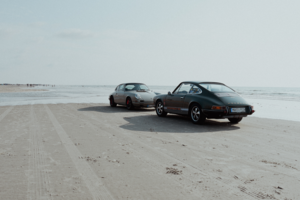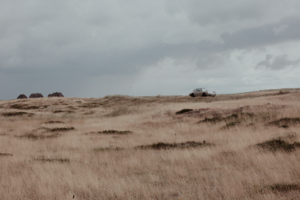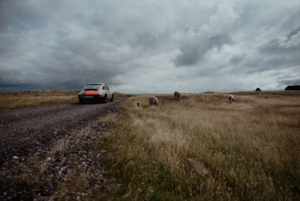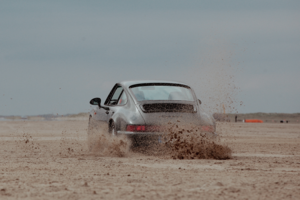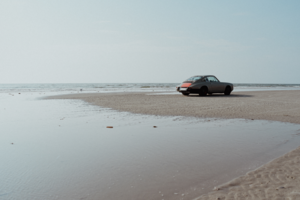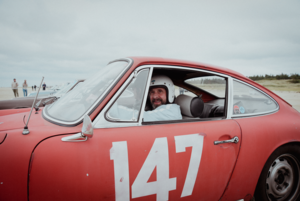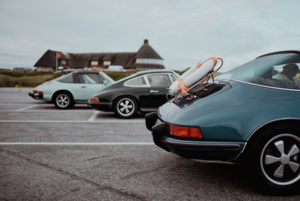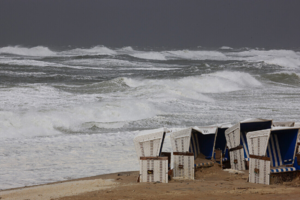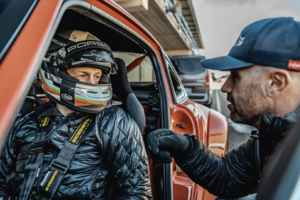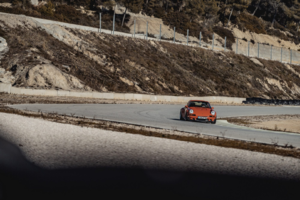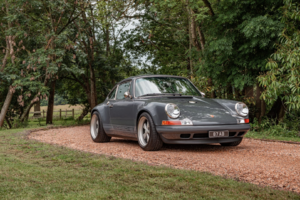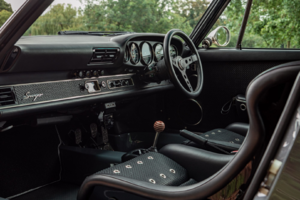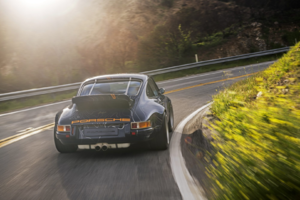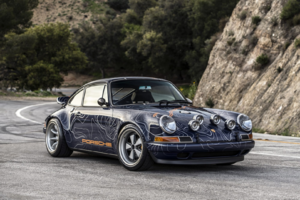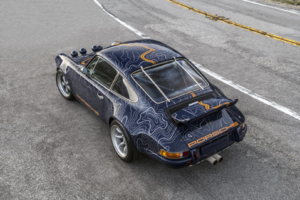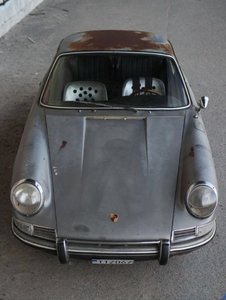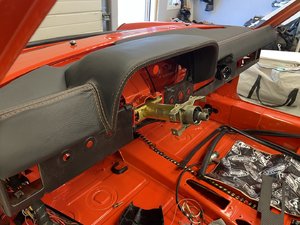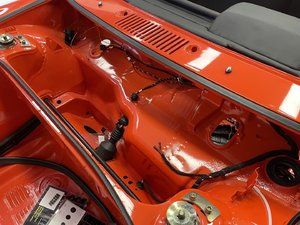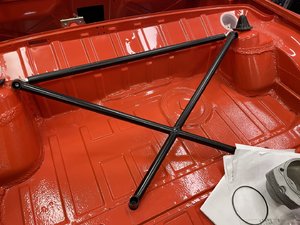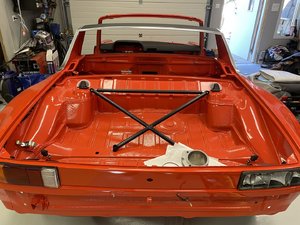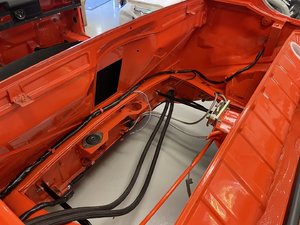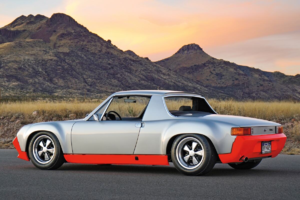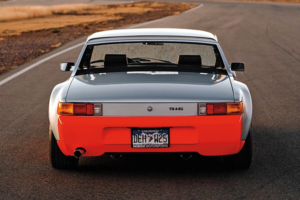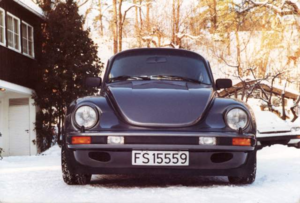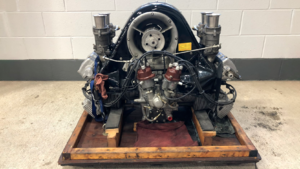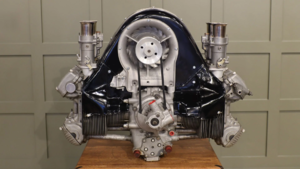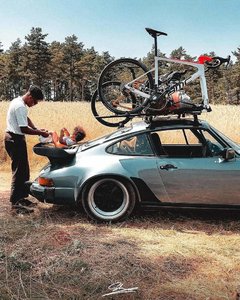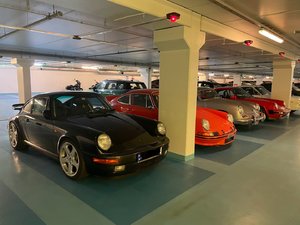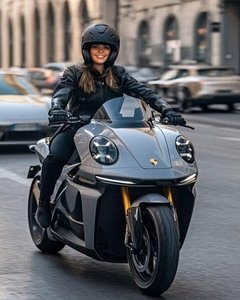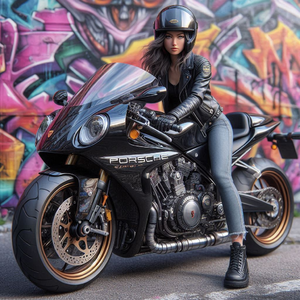Porsche’s 916 is a model few of the marque’s countless fans have ever seen in the flesh. Only 11 were constructed and they remain as rare as proverbial hens’ teeth. Still, they were perhaps among the most exciting road cars ever to emerge from the fabled automaker. All were development prototypes, as the 916 never made it into production.
However, did you know that one of these extraordinary high-performance sports cars had been destined for factory crash-testing to meet U.S.-market safety demands? Fortuitously, the car was spared, perhaps only because the entire project was canceled. This particular chassis, 914 233 0020, survives today because an American enthusiast purchased it in Europe almost 50 years ago, drove it as Porsche intended, and then tucked it safely away.
The 916 was described internally as a “Super 914”, aimed squarely at Ferrari’s curvaceous “Dino”, whose mid-ship-mounted V6 engine—first in 2.0-liter displacement as the 206 and then with a larger engine as the 246—and its snug two-seat configuration appealed to an exclusive market segment.
After a trio of factory-entered and race-prepped 210-horsepower two-liter VW-Porsche 914-6 GTs cleaned house at the 1970 Marathon de la Route—an 84-hour enduro at the Nürburgring—three other “Six-GTs” with standard 911S engines managed a reasonably successful outing at the 1971 Monte Carlo rally. Those results were very encouraging to Ferdinand Piëch, Ferry Porsche’s cousin.
As the company’s engineering manager and racing director at the time, Piëch saw great sales potential in the further development of a strengthened and higher-powered 914-6. That project would become known as the 916. As we shall see, it was destined to be a great idea that arrived at the wrong time.
Piëch authorized the construction of one prototype, which was fitted with a ferocious 345-hp, 2.8-liter RSR engine and a stronger 915 transaxle to use as his daily driver. To stiffen the chassis, a steel roof panel was welded to the windshield frame and roll-over hoop, and the floor pan longitudinals were strengthened.
A set of steel fender flares identical to those of the 914-6 GT were installed, adding enough width to cover 15 × 7 and 15 × 8 Fuchs alloy wheels with spacers mounting correspondingly wider tires at each corner. New front and rear fascias of molded fiberglass were fitted—the front unit serving as an air dam and containing a pair of clear-lensed fog lamps and a ducted central inlet for an auxiliary oil cooler. The rear fascia accommodated a single exhaust outlet. Brakes and suspension were borrowed from the 911S parts bin. The interior was upgraded as well, with a pair of sport seats from Recaro.
Piëch was delighted with the result, but he knew a production version had to be toned down, so he directed the racing department to build ten additional chassis for further development. These standard 914 “bodies in white” were shipped from the Karmann assembly line in Osnabrück, Germany, to specialist coachbuilder Baur in Stuttgart. There, steel roof panels were welded on and the side longitudinals were reinforced and coated with plastic rust-proofing.
To better match up performance-wise with the Dino, Porsche specified the 2.4-liter mechanically fuel-injected engine of 190 hp from the 911S, mated to a 915 five-speed transaxle, with both units suitably modified for mid-engine placement. This engine was designated the Type 911/56. Instrumentation was upgraded to reflect the new model’s potential; the tachometer maxed out at the same 8,000 rpm as lesser 914s but now carried a much higher 7,200 rpm redline, at which time a protective rev-limiter would intervene. The 280 km/h (174 mph) speedometer was replaced with one that read to 300 (186 mph). As on the prototype, the brakes and many suspension components were borrowed from the 911S. Most, but not all, of these cars would eventually be upgraded with more powerful 2.7-liter Carrera RS engines.
Piëch intended to unveil the 916 at the October 1971 Paris Auto Salon, but he was ordered to pull the plug just two weeks before that event. The world’s economy was staggering and the Deutschemark’s value had been rising steadily after it was allowed to float. At the same time, manufacturing costs were climbing. Porsche’s accounting team had determined that the 916 would have to carry a factory retail price of 40,000-50,000 Deutschemarks ($13,000-$15,000 back then, which works out to $97,700-$112,750 in 2023 dollars), or about that of the Dino, but far more expensive than a loaded 1972 911S. For management, the bottom line didn’t pencil out.
The first prototype was loaned to Piëch’s first wife, Corinna, who nicknamed it “Brutus” because of its brutal appearance and tremendous performance. Four of the succeeding ten completed cars were either sold or gifted to other Porsche and Piëch extended family members. Two were sold to American dealers: Brumos in Florida, and Johnny von Neumann in California. The remaining examples were sold to favored clients.
Assigned production number 1310439, chassis 0020 was completed on February 2nd, 1972, the seventh of the ten in the series to leave the factory, despite carrying the last and highest chassis number. All the 916s were finish-painted in non-standard colors; upholstery varied. Some were trimmed in leatherette with patterned fabric inserts, while a few had leather and fabric.
Our feature car was sprayed VW Silver Metallic with eye-popping Day-Glo orange bumpers and rockers. The latter was a strange choice since—as Gruber and Konradsheim relate in their volume on the Carrera RS—German law prohibited this vivid hue from being used on private vehicles. The interior trim and carpeting were black, with black leather seat bolsters and blue patterned tweed fabric inserts. Its original 2.4-liter engine case was stamped number 6325026. The five-speed transaxle was number 915P/009, differing from a regular 915 box in that the shift linkage was moved to the rear.
Factory records show that the first owner was Hans-Jürgen Kischkel of Köln, who purchased the car for 41,000 Deutschemarks and registered the car the day after it left the factory. Little is known about Kischkel other than his making his 916 available to several German automotive magazines for testing.
The August 1972 issue of Auto Motor und Sport contained an extensive review of the car, noting that it was powered by a 2.4 911S engine and included photographs showing both Bilstein and Dunlop tire stickers on the rear bumper. The magazine stated that the car weighed about 1,000 kg, or 2,200 pounds, yielding a horsepower per kilogram ratio of 5.1, promising much better performance than a heavier 911S coupe.
“An acceleration time of about 6.5 s to 100 km/h (62 mph) and a top speed of nearly 240 km/h (150 mph) therefore seem realistic,” wrote the test driver. The car had been fitted with 7.0-inch-wide Fuchs alloys carrying 185-70/15 tires all around, with 21 mm (0.8 in.) spacers in front and 27 mm (1.1 in.) spacers in the rear to help fill out the steel GT box flares.
Kischkel appears to have enjoyed his car for several years. In August 1974, the car appeared in another German enthusiast magazine, Auto Zeitung, bearing registration number K-D 666. By then, Kischke had changed the car’s color scheme and powerplant. It was now Schwarz Black with Gulf Orange bumpers and rocker panels. Custom-made orange “916” safety stripes—similar to those which became an option on 911s in 1974—had been added to the front lid and black “Negative” Porsche strips adorned the rockers.
The original 2.4 911S engine had been replaced by a then-new and very potent Type 911/83 engine of 2.7 liters and 210 horsepower, case number 6631499, identical to the one found in the then-new 1973 911 RS 2.7. Small emblems that read “RS 2.7” were affixed to the sail panels. The testers from Auto Zeitung confirmed that the horsepower per kilogram ratio was indeed 5.1 and the zero to 100 kph (62 mph) time was about 6.5 seconds, although it may have been even quicker. Without question, the uprated 916 would have been the fastest and quickest normal production car to ever emerge from Zuffenhausen at that point.
The 916’s wider stance certainly helped it maintain stability, especially at higher speeds, but the mid-engined chassis was still prone to snap oversteer in extremis due to its low polar moment. Auto Zeitung would remark that intense concentration was required from an experienced hand at the wheel, ready to hammer the throttle and induce counter-steering should the car suddenly decide to get tail-happy in a corner.
Kischkel appears to have sold or brokered the car through a company in Dortmund, which in turn delivered it to Mr. Andrew Swett Richman for 30,550 Deutschemarks ($11,750 then, or $67,470 today) on May 31st, 1975. Research by the current owner indicates that Richman was an employee of the Bultaco motorcycle racing team in support of dirt bike specialist Jim Pomeroy, the first American to win a motocross Grand Prix in Europe.
Richman queried Porsche as to the authenticity of the car and received a confirmation letter. That August, Richman brought the 916 to Porsche Stuttgart-Zuffenhausen for a major service that cost 2,664 Deutschemarks ($703, or $4,100 in current dollars). The car had covered 48,654 kms (30,232 miles) to that point.
The following year, Richman decided to sell the Porsche and began asking around the local Porsche community to see who might be interested. He was referred to a U.S. Army Lt. Colonel, a former helicopter and fixed-wing maintenance test pilot stationed in Germany. This officer had already become a Porsche enthusiast, owning several 356s, 911s, and a 914-6. He bought the car from Richman on January 2nd, 1976, for $8,250 ($44,400 today) and registered the car with U.S. Army/Germany plate number NH-7270.
As a member of the Germany Region of PCA, which was heavily populated with American servicemen serving in that country, the Colonel began autocrossing and running track days, where factory shoe Jürgen Barth was a frequent instructor. After retiring from the Army in 1981, he and his wife spent a year touring Europe before returning to the U.S., bringing the 916 with them.
The car was placed into storage at the family’s farm south of Atlanta, Georgia. There it remained for several years, along with several other Porsches, until the Colonel moved the car to Florida. Intending to restore his rare automobile, by 2016—at age 84—he had pulled the engine and transaxle and put them aside for cleaning, rebuilt the suspension, and resprayed the bodywork. He worked on the project until two months before his 89th birthday. Unfortunately, the Colonel passed away in early 2021. His family then took over the project.
The 916 and its still-separated drivetrain were shipped to Patrick Motorsports in Phoenix, Arizona, for a bare-metal restoration. The car was stripped, some minor rust issues were addressed, and then it was repainted in its original, eye-catching color scheme of VW Silver Metallic with Day-Glo red bumpers. The goal was to make the car as original mechanically and cosmetically as possible. The owner says that choosing between the two color options (Silver/Day-Glo red or black/orange) was difficult. After much thought, he decided to go back to the original Silver and Red.
Patrick Motorsports overhauled the Carrera RS 2.7 series engine and original transaxle. Early on, the car was fitted with a radio that required a swept-back antenna affixed to the center of the windshield frame. A period-correct radio was installed as part of the restoration. The interior was also reupholstered to look like the factory-original cabin.
At one point, the car had been fitted with a set of Minilite wheels which were used for club racing. Those were stripped and inspected, but their restoration was questionable, says the owner, as old magnesium is prone to stress failure. A set of correctly-sized Fuchs rims were mounted. The original spare Fuchs and collapsible tire remain with the car. The car’s weight was determined to be 2,188 pounds, split 42.7 percent to 57.3 percent, front to rear.
One of the most interesting interior details is the original driver’s side door pull, similar to that on the 914-6 GT and very different from the 914-style passenger armrest/pull. It comprises a cross-woven leather pull strap with metal end caps. Because the original pieces were severely corroded and worn, new caps were fabricated by Patrick Motorsports and chrome-plated in El Paso, Texas. Patrick Motorsports employees then created a new woven-leather pull strap.
The restored 916 debuted at PCA’s Monterey Werks Reunion last August. To the owner’s delight, this spectacular car was named the best of the 914 group. Additional detailing was carried out after the car’s return from Monterey, followed by some testing at Inde Motorsports Ranch east of Tucson.
“The car has been hidden away in my family for 46 years,” the owner says. “I have met very few people who loved cars as much as (my father) did. It is time for the car to be enjoyed by Porsche enthusiasts. My plans are to keep the car in the family for as long as I can.”
So, who won the battle, Porsche or Ferrari? If we consider the production totals, Ferrari could rightly claim top honors, having delivered about 3,700 Dinos—in both 206 and 246 variants. Being considerably heavier and slightly less powerful, Dinos were slower in acceleration times—maximum speeds were fairly equal—but in terms of market success, quantity seems to have triumphed over quality. Scarcity and desirability today, however, places the 916 head and shoulders above the Dino, indeed, as rare as the proverbial hen’s tooth.



 www.fascinatingcars.se
www.fascinatingcars.se



 Sist redigert:
Sist redigert: Sist redigert:
Sist redigert:

